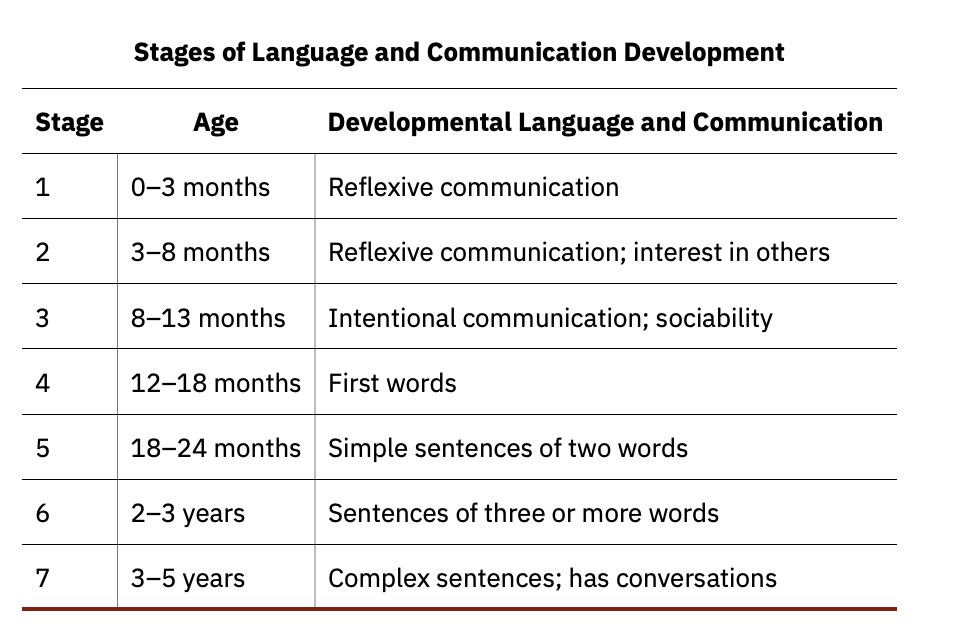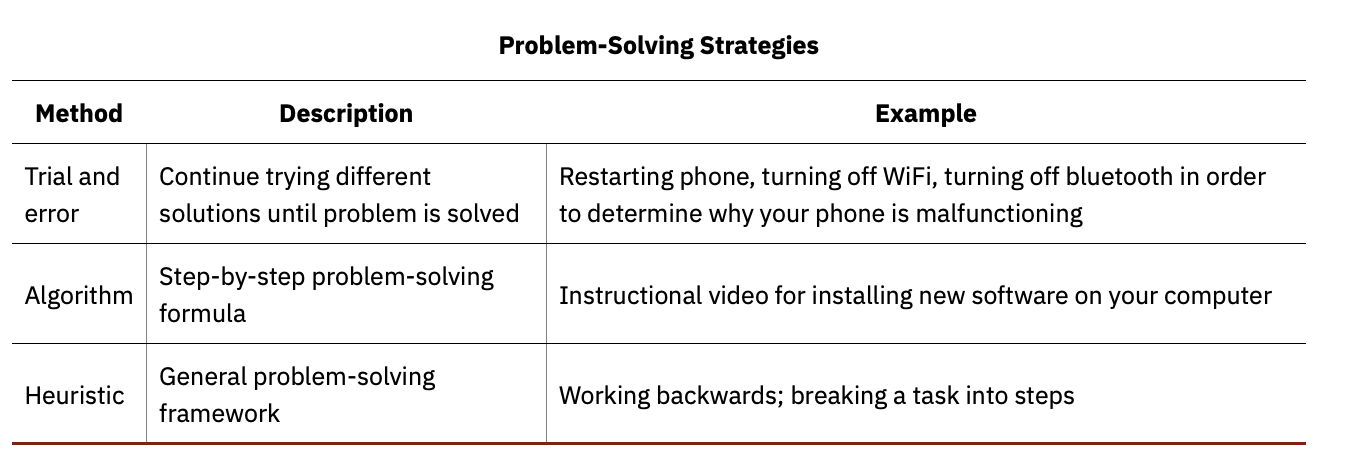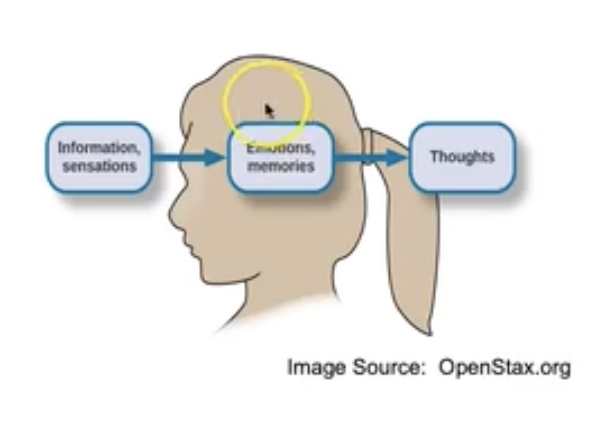Chapter 7 Notes - Thinking and Intelligence
1/15
Earn XP
Description and Tags
219 - 227 and 7.3
Name | Mastery | Learn | Test | Matching | Spaced |
|---|
No study sessions yet.
16 Terms
Babies and language
Babies can discriminate among the sounds that make up a language (for example, they can tell the difference between the “s” in vision and the “ss” in fission); early on, they can differentiate between the sounds of all human languages, even those that do not occur in the languages that are used in their environments
However, by the time that they are about 1 year old, they can only discriminate among those phonemes that are used in the language or languages in their environments
Babbling stage
After the first few months of life, babies enter what is known as the babbling stage, during which time they tend to produce single syllables that are repeated over and over
As time passes, more variations appear in the syllables that they produce. During this time, it is unlikely that the babies are trying to communicate; they are just as likely to babble when they are alone as when they are with their caregivers
Interestingly, babies who are raised in environments in which sign language is used will also begin to show babbling in the gestures of their hands during this stage
“One word” stage
Generally, a child’s first word is uttered sometime between the ages of 1 year to 18 months, and for the next few months, the child will remain in the “one word” stage of language development.
During this time, children know a number of words, but they only produce one-word utterances
Vocabulary is limited to familiar objects or events, often nouns
Although children in this stage only make one-word utterances, these words often carry larger meaning
So, for example, a child saying “cookie” could be identifying a cookie or asking for a cookie
Children growing and learning more words… stage
As a child’s lexicon grows, they begin to utter simple sentences and to acquire new vocabulary at a very rapid pace
Children begin to demonstrate a clear understanding of the specific rules that apply to their language(s)
Even the mistakes that children sometimes make provide evidence of just how much they understand about those rules
Overgeneralization - refers to an extension of a language rule to an exception to the rule
“those two gooses” or “three mouses”
Clearly, the rules of the language are understood, even if the exceptions to the rules are still being learned

Edward Sapir and Benjamin Lee Whorf
wanted to understand how the language habits of a community encourage members of that community to interpret language in a particular manner
Sapir and Whorf proposed that language determines thought
Researchers have since identified this view as too absolute, pointing out a lack of empiricism behind what Sapir and Whorf proposed
Linguistic Determinism
Language may indeed influence the way that we think
English and Mandarin example
Differences in language translate into differences in performance on cognitive tests designed to measure how quickly an individual can recognize temporal relationships
Boroditsky - “habits in language encourage habits in thought”
Dani and English
Researchers hypothesized that the number of color terms could limit the ways that the Dani people conceptualized color. However, the Dani were able to distinguish colors with the same ability as English speakers, despite having fewer words at their disposal
Problem-solving strategy
Plan of action used to find a solution
Trial and error - any one solution is not a priority before another
Insight - apprehending a solution suddenly and correctly based largely on unconscious processing - “epiphany”
Algorithm - a problem-solving formula that provides you with step-by-step instructions used to achieve a desired outcome. Must be followed exactly to produce a correct result.
are used frequently in our everyday lives, especially in computer science.
Heuristic - a general problem-solving framework, “rule of thumb”
impulse to use a heuristic occurs when one of five conditions is met:
When one is faced with too much information
When the time to make a decision is limited
When the decision to be made is unimportant
When there is access to very little information to use in making the decision
When an appropriate heuristic happens to come to mind in the same moment
Working backwards - useful heuristic in which you begin solving the problem by focusing on the end result
The practice of accomplishing a large goal or task by breaking it into a series of smaller steps

Mental set
Where you persist in approaching a problem in a way that has worked in the past but is clearly not working now
Functional fixedness is a type of mental set where you cannot perceive an object being used for something other than what it was designed for
functional fixedness is experienced in both industrialized and nonindustrialized cultures
Anchoring bias and Adjustment
occurs when you focus on one piece of information when making a decision or solving a problem
Occurs unconsciously and naturally ; part of being human
A heuristic that influences how to assess probabilities ; person starts with an implicitly suggested reference point as the first guess, and then adjusts from there to arrive at the final estimate
Confirmation bias
tendency to focus on information that confirms your existing beliefs
Hindsight bias
leads you to believe that the event you just experienced was predictable, even though it really wasn’t
Representative bias
describes a faulty way of thinking, in which you unintentionally stereotype someone or something
Tversky and Khaneman’s other heuristics from research in the 1970s
Availability heuristic
a heuristic in which you make a decision based on an example, information, or recent experience that is that readily available to you, even though it may not be the best example to inform your decision
Judging probability based on how easily accessible the solution appears
Tversky and Khaneman’s other heuristics from research in the 1970s
Bias
Biases tend to “preserve that which is already established—to maintain our preexisting knowledge, beliefs, attitudes, and hypotheses

Cognitive processes
Cognitions (thoughts) are created form external stimuli and our memories and emotions
Overflowing information needs to be simplified / categorized
We form concepts (create and abstract) through our semantic memory
Concepts can be “natural” (experienced directly or indirectly”) or artificial
After we form the concept, a “prototype” emerges. This is efficient and adaptive — it is also the foundation of stereotypes
Information / sensations come in, intermix with emotions and or memories, result in our thoughts
Schema - a collection of concepts, a method of organizing them
Role schemas - ideas associated with certain roles of people
Event schemas (cognitive scripts) - how we go about doing something

Intuition
Not “innate” / rapid unconscious understanding based on previous experiences
Advantages
Disadvantages